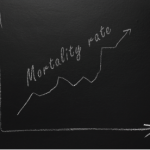“This report paves the way for future studies to identify persons of specific race/ethnicity, sex, age group, and of socioeconomic status and behavior patterns living in certain counties who are at the highest risk of death from lupus,” he says. “So, the counties could focus their resources to target these high-risk populations. This concept is called ‘precision public health.’”
“The good news is that both lupus death rate and lupus death rate relative to non-lupus death rate (ratio) have begun to decrease since the late 1990s at a relatively high pace: (the) lupus death rate has decreased 2.7% every year since 1999, and the ratio has decreased 1.2% every year since 1998,” Dr. Singh says.
“Assuming that this recent decrease is not due to some unforeseen factor, such as a rapid decrease in the incidence of lupus over the past two decades, our results suggest that the management strategies that we are taking seem to be helping lupus patients,” he says. “These management strategies include an aggressive approach to monitor lupus disease activity, judicious use of induction and maintenance regimen of immunosuppressive medications, including mycophenolate, judicious use of corticosteroids, use of hydroxychloroquine, and screening for complications such as atherosclerosis.”
Dr. Luis Ines, director of the lupus clinic at Centro Hospitalar Universitario de Coimbra, in Portugal, tells Reuters Health by email, “Clinical progress in SLE is lagging behind other diseases as a whole. Outcomes can probably be improved by extending access to best standard of care to more patients.”
“There is an unmet need for new drugs and treatment strategies in SLE, that is becoming larger as compared to other diseases,” he says.
Dr. Cezar Caldas from Centro Universitario do Estado do Para (CESUPA), Belem, Brazil, recently reported on SLE mortality there. He tells Reuters Health by email, “As in Brazil, there are regional discrepancies, possibly related to socioeconomic conditions and access to health services. It should be a warning to the authorities, understanding that there are subpopulations that require more attention to reach better health levels.”
Dr. Caldas recommends giving “attention to these subpopulations, especially those older than 65 years, where thinking about the diagnosis of SLE may be more difficult.”
Reference
- Yen EY, Shaheen M, Woo JMP, et al. 46-year trends in systemic lupus erythematosus mortality in the United States, 1968 to 2013: A nationwide population-based study. Ann Intern Med. 2017 Oct 30. doi: 10.7326/M17-0102.

